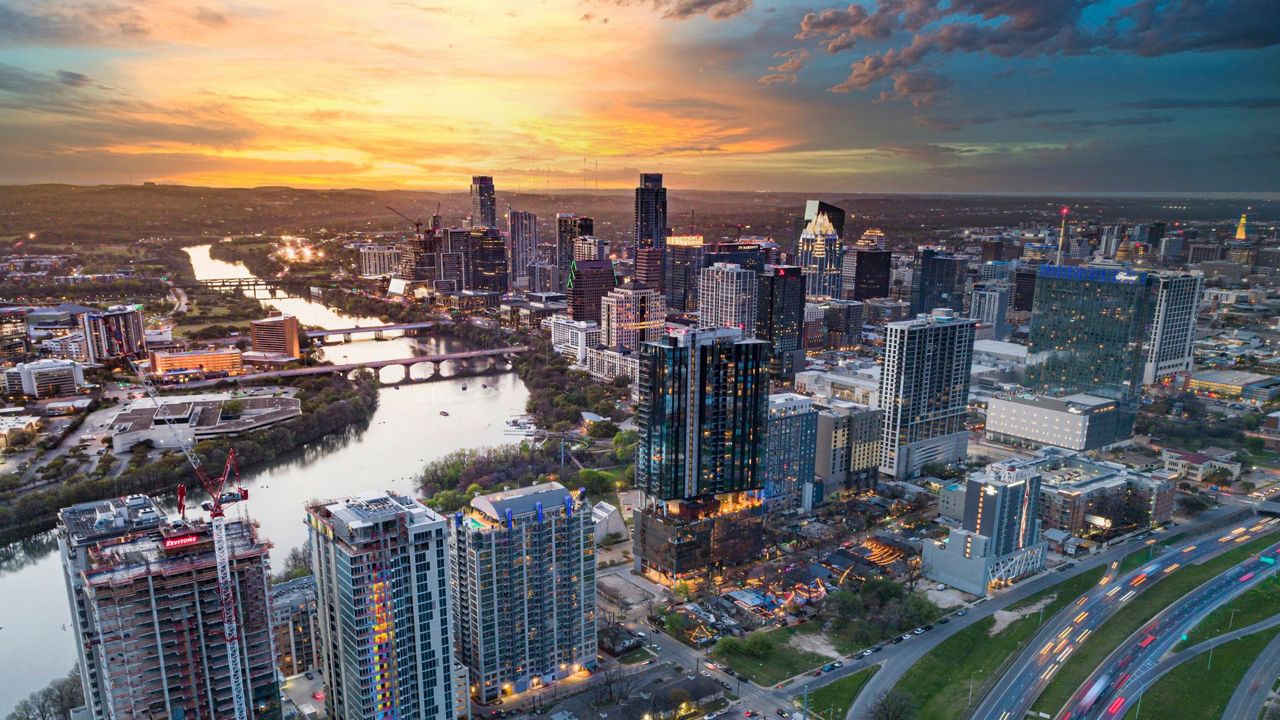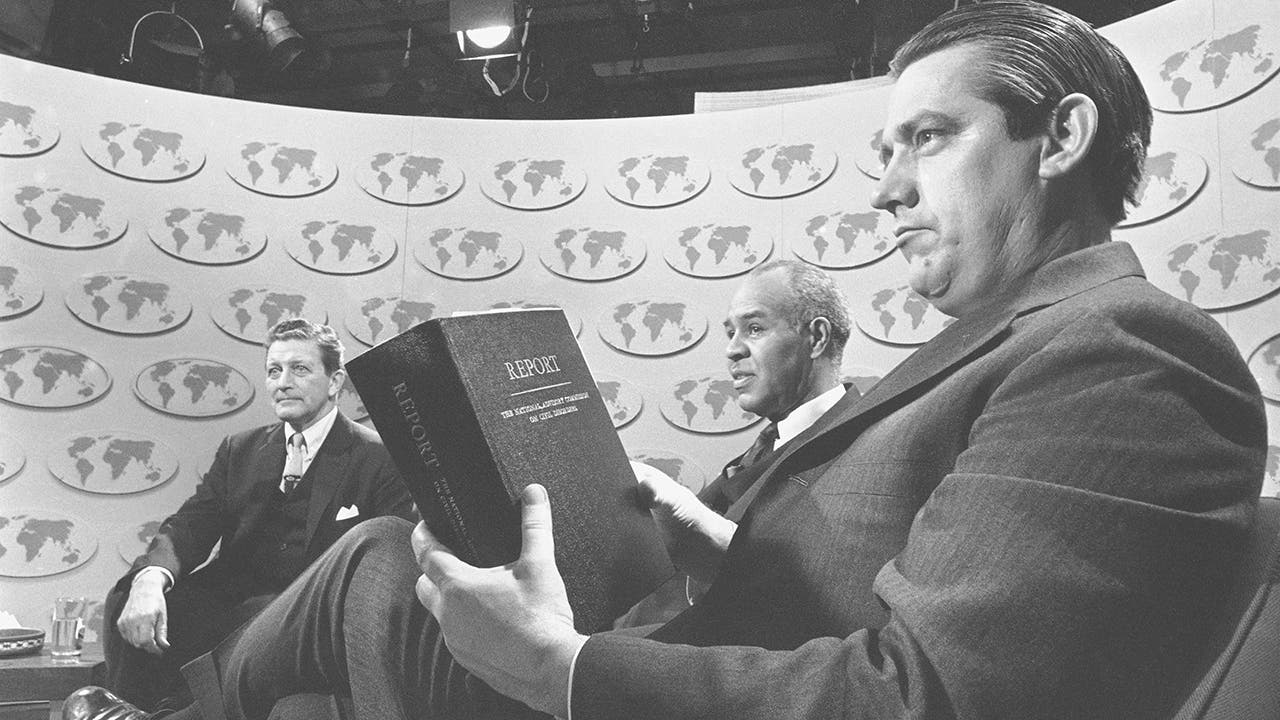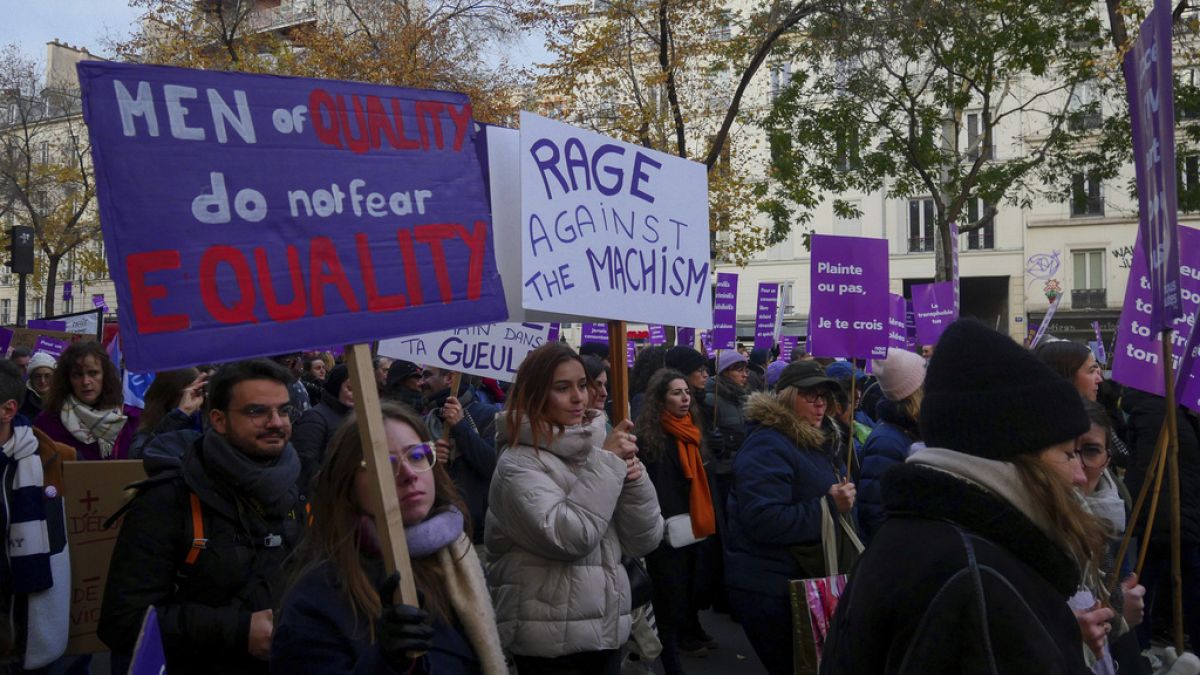Utah
Utah launches new Spanish campaign for suicide prevention

Estimated read time: 4-5
minutes
SALT LAKE CITY — Jeannette Villalta has seen the impact of suicide on her community from all sides.
As a suicide survivor, she’s gone through dark periods where life didn’t seem to be worth living. She also knows the pain of losing a loved one to suicide and how it feels to not know how to help. As a community health worker, she knows resources are available to help — but she also knows that mental health still carries a stigma in the Hispanic and Latino community.
“In a dark moment of life, you believe there is no more life,” she said in Spanish. “I know what it’s like to be in this dark moment, but I also know what it is to lose someone and the pain we cause when we do this in search of peace. I know that in these moments of total darkness, we do not know how to ask for help because we do not know how to recognize it. And our relatives, despite wanting to, cannot help us either because maybe it is something new for them and they do not have those necessary tools to help a loved one.”
She hopes a new Utah suicide prevention campaign in Spanish will help create an environment where mental and emotional health issues are discussed openly and without stigma in the Latino community. That kind of environment, she added, is something that will save lives.
The Live On Latino campaign consists of eight lessons that offer education on suicide and emotional health, including how to find help and how to broach the topics with loved ones. The free video lessons are completely in Spanish and last about 5-7 minutes each.
The campaign is modeled after the state’s Live On Playbook, which offers similar resources in English. However, creating Live On Latino went far beyond simply translating the resources into Spanish, said Department of Health and Human Services spokeswoman Luisa Hansen.
Suicide does not discriminate. It does not discriminate culture. It does not discriminate gender, it does not discriminate age, and it can strike at any moment. This is why it’s so important that we work together to prevent it and to offer hope to those that feel hopeless.
–Karla Arroyo, Multicultural Counseling Center
Instead, the department worked with community members to craft resources that take things like culture and familial norms in Latino households into account and highlighted mental health providers that specialize in helping Latino and Hispanic clients.
“We knew that the Hispanic community is not in the same place where the majority of the community is here. We knew that the subject has been talked about (in that community) for many, many decades; while in the Hispanic or Latino community, it’s a taboo subject,” Hansen said. “We needed to go back to the basics.”
The campaign adopted the term “emotional health,” for example, after getting feedback from community members that the term “mental health” can carry a negative connotation among many in the Hispanic community. Likewise, the first lesson in the campaign, titled “Nuestra Cultura,” or “our culture,” addresses some of those cultural factors impacting mental and emotional health.
“Our culture has a lot of good things when it comes to supporting us,” Live On Latino instructor Hirepan Zarco says in Spanish during the lesson. “But it also has its challenges. Latino culture has a lot to do with appearances. In the case of suicide, this can make it difficult to detect the signs that could allow us to help people who need it. Within the good things of our culture, we find a very close community with strong family ties.”
The Spanish resources, unlike the English ones, are available on YouTube and Facebook, in addition to Instagram. Hansen said that request came directly from community members who said it would be easier to listen on YouTube or Facebook while they are at work or busy fulfilling other responsibilities.
Villalta said she’s seen Latino families not pay attention to mental health because other things, like putting food on the table, take priority.
“We know our community is a hard-working community,” she said, “And many times we don’t have enough time to study these topics.”
Karla Arroyo, executive director of the Multicultural Counseling Center, stressed the campaign’s resources aren’t for social workers or mental health providers but for everyone.
“Suicide does not discriminate. It does not discriminate culture. It does not discriminate gender, it does not discriminate age, and it can strike at any moment,” she said. “This is why it’s so important that we work together to prevent it and to offer hope to those that feel hopeless.”
“We must promote the importance of parents talking to their children, teachers talking to their students, friends talking to friends, godparents talking to their parents and kids,” Arroyo continued. “We must remind everybody that there is hope and that life is worth living.”
Live On Latino resources are available for free on Instagram, YouTube and Facebook.
Suicide prevention resources
If you or someone you know is struggling with thoughts of suicide, call 988 to connect with the 988 Suicide and Crisis Lifeline.
Crisis hotlines
- Huntsman Mental Health Institute Crisis Line: 801-587-3000
- SafeUT Crisis Line: 833-372-3388
- 988 Suicide and Crisis LifeLine at 988
- Trevor Project Hotline for LGBTQ teens: 1-866-488-7386
Online resources
Related stories
Most recent Multicultural Utah stories
More stories you may be interested in

Utah
NHL On Tap: Maple Leafs host Utah, seek 4th straight win without Matthews | NHL.com

Welcome to the NHL On Tap, a daily look at the games on the NHL schedule. There is one game on the schedule for Sunday, which will be televised nationally in the United States and Canada.
Game of the day
Utah Hockey Club at Toronto Maple Leafs (7 p.m. ET; TVAS, TSN4, NHLN, Utah16)
Mitch Marner, William Nylander and John Tavares have all stepped up for the Maple Leafs (12-6-2) in the absence of captain Auston Matthews and look to continue the trend against Utah (8-9-3) at Scotiabank Arena. Marner has 12 points (four goals, eight assists), Nylander nine points (four goals, five assists) and Tavares eight points (four goals, four assists) in the seven games without Matthews, who is out with an upper-body injury. Toronto has won three in a row and is 6-1-0 without Matthews, who skated prior to practice Saturday and said he could return from an upper-body injury this upcoming week. Marner leads Toronto with 26 points (six goals, 20 assists) in 20 games and has points in six of the seven games Matthews has missed. Maple Leafs goalie Joseph Wall made 31 saves in a 3-0 win against the Vegas Golden Knights on Wednesday for his first shutout of the season and second in the NHL. Utah is playing the second game of a back-to-back for the first time in team history and will look to build on a 6-1 win at the Pittsburgh Penguins on Saturday. Dylan Guenther had two goals and an assist, and Clayton Keller had three assists, helping Utah end a three-game losing streak. Goalie Jaxson Stauber could make his Utah debut after being recalled from Tucson of the American Hockey League on Wednesday; the 25-year-old has not played an NHL game since Feb. 22, 2023, with the Chicago Blackhawks. No. 1 goalie Connor Ingram has missed the past two games with an upper-body injury.
Utah
Iowa State football: Three stars in win for Cyclones over Utah in Big 12 action

It takes a complete football team to win a championship. Iowa State is finding that out with each passing week.
Seemingly left for dead in the heated Big 12 Conference race, the Cyclones now find themselves one win away from competing for the league title following a thrilling 31-28 victory over Utah Saturday night.
Iowa State (9-2, 7-2) reached the nine-win mark before a bowl game for the first time in program history, and could end one of the longest droughts in NCAA history by reaching 10 wins. The Cyclones and Vanderbilt are the only remaining Power 5 programs to never reach 10 wins, as Indiana did earlier this year.
After taking a 24-13 lead on Utah midway through the third quarter, the Cyclones needed a rally, scoring the game-winning touchdown with 91 seconds to go. The defense forced a missed field goal to seal the win.
Here are three stars from Iowa State’s win over Utah:
Known for his power running, Carson Hansen showed off his arm on a key third-down trick play that led to his second rushing touchdown. Hansen, a sophomore, took a halfback pass and found Gabe Burkle for a 26-yard completion.
That put the ball at the Utah 3 and Hansen would plow his way into the end zone on the next play for the game-winning points. He finished the night with a team-high 57 yards on 14 carries to go along with the 26-yard pass while also catching two balls for another 28 yards.
At 6-2 and over 220 pounds, Hansen is the thunder to Abu Sama’s lightning. He now has 11 rushing touchdowns on the year to go along with 560 yards after rushing for just 67 last season as a freshman.
Anytime Rocco Becht needed to make a big play in the passing game, he looked in the direction of Jayden Higgins. And Higgins stepped up for his quarterback, who was not quite as sharp as he typically has been.
Higgins finished with nine receptions for 155 yards and a touchdown, surpassing 1,000 yards for the season. The 6-foot-4 senior out of South Miami became just the seventh different Cyclone to reach the number after missing out last year with 983 yards.
With at least two, and maybe more, games to go, Higgins sits sixth on the school’s single-season list for yards with 1,015. Hakeem Butler is first with 1,318. Higgins and teammate Jaylin Noel, who has 976 yards, are set to become the first Cyclone teammates to eclipse 1,000 yards in the same season in school history.
Higgins is also just two yards away from becoming just the 10th Iowa State receiver to reach 2,000 career yards, joining the likes of Allen Lazard, Xavier Hutchinson and Charlie Kolar, along with Noel.
It’s been a difficult season in regards to injuries on both sides of the ball for Iowa State. But the defense has really been hurt with Malik Verdon out.
Verdon, a junior, recorded a team-leading 12 tackles including a sack, as the Cyclones held Utah to just 99 yards of total offense through three quarters.
And while the Utes were able to finally put together sustained drives in the fourth, when they needed to make a play, Iowa State did. Verdon went out for a short time after appearing to reinjure his arm that has a cast due to a hairline fracture, but would return to the field later in the fourth.
Utah
How to watch Iowa State football at Utah; TV channel, spread, game odds, prediction
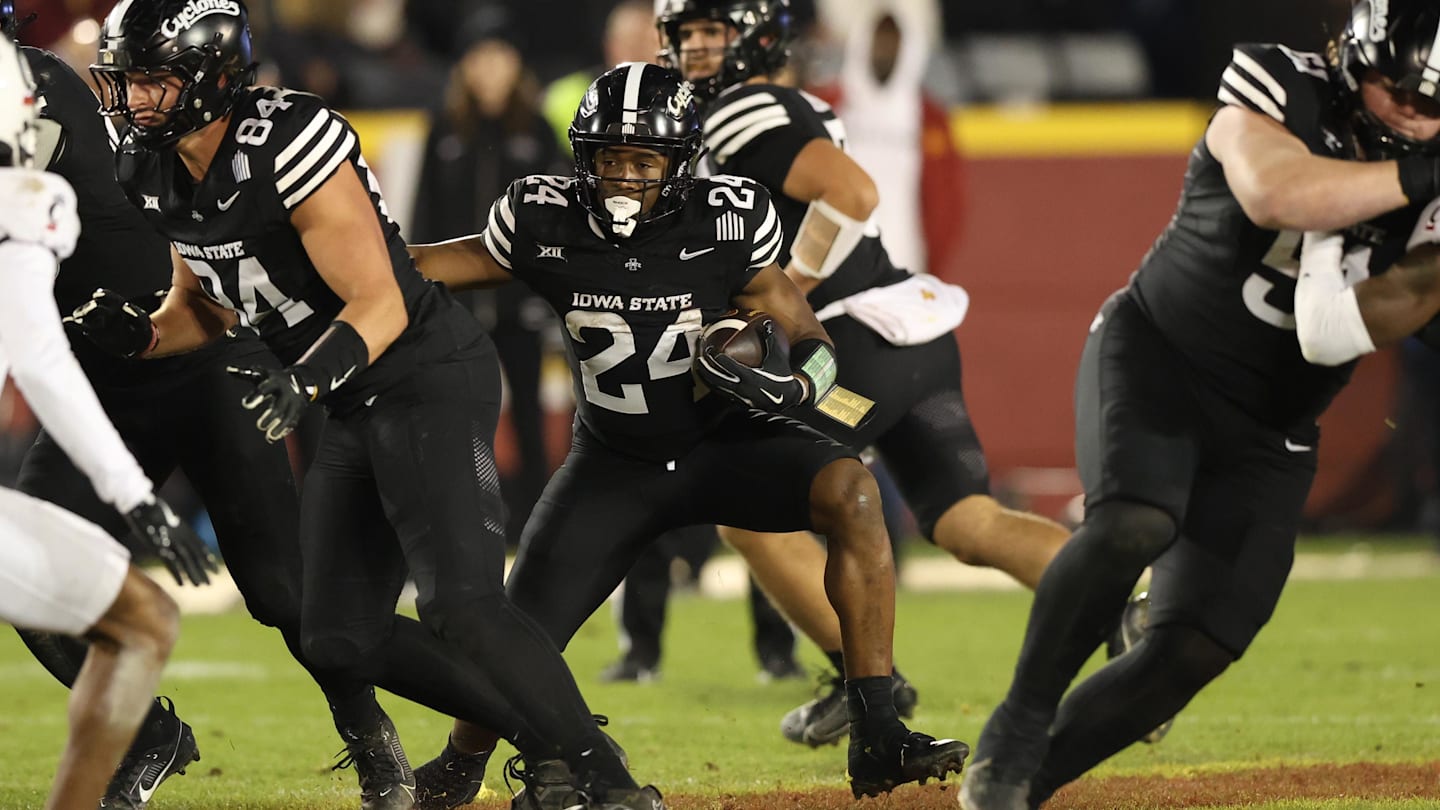
The Iowa State football team has two weeks to solidify themselves and possibly land a spot in the Big 12 championship game in December.
Part one of the two-piece series starts Saturday night, as the Cyclones (8-2, 5-2) make a visit to Salt Lake City to play Utah (4-6, 1-6).
Sitting a game behind co-conference leaders BYU and Colorado, Iowa State is in position but on the outside looking in for the time being. They also have red-hot Arizona State to contend with, as the Sun Devils have quickly climbed the standings and sit tied with ISU.
Utah has dropped six straight since starting the season off 4-0 as preseason favorites to win the Big 12. Of those six losses, four have been decided by eight points or less. Last Saturday, though, they suffered a 25-point setback to Colorado.
Along with several tough losses, the Utes have been without star quarterback Cam Rising since the losing skid began. Rising is out for the season following multiple injuries, as Isaac Wilson – the brother of NFL QB Zack Wilson – has replaced him.
Iowa State and Utah have a bit of a history, playing each other five times between 1970-2010. The Cyclones won the first four meetings between the two while the Utes won the most recent, claiming a 68-27 victory. Utah was undefeated and ranked 10th in the country during that encounter.
The oddsmakers have the Cyclones set as a 6.5-point favorite. ESPN’s FPI puts them at just over 63 percent to win the game.
Here are the details on how to watch, stream and follow Iowa State’s game at Utah on Saturday night:
Iowa State at Utah TV Channel, Live Stream, Odds
Who: Iowa State at Utah in a Big 12 football game
When: 6:30 p.m. CT | Saturday, November 23
Where: Rice-Eccles Stadium | Salt Lake City, Utah
Live Stream: Stream Iowa State-Cincinnati live on fuboTV (Start your free trial)
TV Channel: FOX
Betting Odds: Iowa State is favored by 6.5 points. Odds courtesy of FanDuel Sportbook
Our Prediction: Iowa State 24, Utah 10
Live Updates, Highlights: Follow the game on Iowa State on SI for live updates, in-game analysis and big-play highlights throughout Saturday’s matchup.
* Latest betting odds for Iowa State
* Matt Campbell talks up the Utah defense
* Cyclones right back into contention in wild, wild Big 12
*Three stars in Iowa State’s win over Cincinnati including Stevo Klotz
*Complete game recap of Iowa State’s win over Cincinnati
-

 Business1 week ago
Business1 week agoColumn: Molly White's message for journalists going freelance — be ready for the pitfalls
-

 Science5 days ago
Science5 days agoTrump nominates Dr. Oz to head Medicare and Medicaid and help take on 'illness industrial complex'
-

 Politics7 days ago
Politics7 days agoTrump taps FCC member Brendan Carr to lead agency: 'Warrior for Free Speech'
-
/cdn.vox-cdn.com/uploads/chorus_asset/file/25739950/247386_Elon_Musk_Open_AI_CVirginia.jpg)
/cdn.vox-cdn.com/uploads/chorus_asset/file/25739950/247386_Elon_Musk_Open_AI_CVirginia.jpg) Technology6 days ago
Technology6 days agoInside Elon Musk’s messy breakup with OpenAI
-

 Lifestyle7 days ago
Lifestyle7 days agoSome in the U.S. farm industry are alarmed by Trump's embrace of RFK Jr. and tariffs
-

 World7 days ago
World7 days agoProtesters in Slovakia rally against Robert Fico’s populist government
-

 News6 days ago
News6 days agoThey disagree about a lot, but these singers figure out how to stay in harmony
-
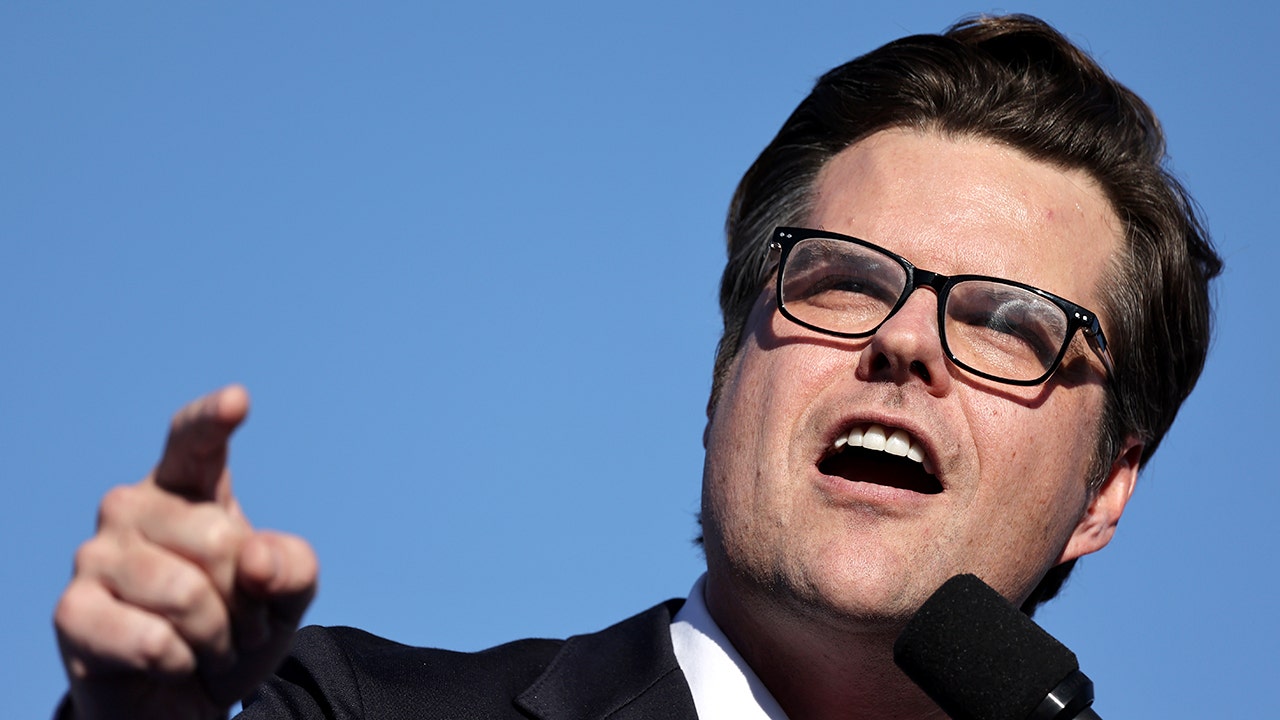
 News7 days ago
News7 days agoGaetz-gate: Navigating the President-elect's most baffling Cabinet pick



